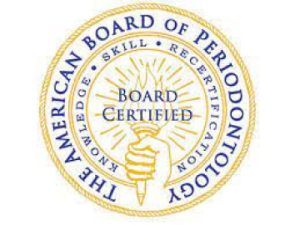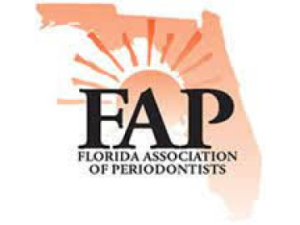Osseous surgery, or pocket reduction surgery, is a treatment for serious gum disease like periodontitis. This procedure aims to eliminate bacteria that cause infections, reduce the pockets around your teeth where plaque likes to hang out, and fix any bone damage.
Defining Osseous Surgery and Its Importance
In a healthy mouth, bones and gums hug teeth closely with minimal space between them—about two to three millimeters. Periodontal disease widens these gaps, allowing bacteria to damage bone and gum tissue. Osseous surgery aims to eliminate harmful bacteria, reduce pocket size for easier cleaning, address bone damage, and maintain gum and tooth health. Proper oral hygiene is crucial in maintaining the results of osseous surgery and promoting overall oral health.
Signs and Symptoms Indicating the Need for Osseous Surgery
When you notice signs like deep gaps between your teeth and gums (more than five millimeters) or consistent swelling, it might mean there’s a bigger problem. These issues can point towards gum disease, which could require osseous surgery to fix.
Deep Periodontal Pockets and Their Impact
When the space between your teeth and gums becomes five millimeters or more, deep periodontal pockets form. These pockets can be a breeding ground for bacteria and lead to common dental issues such as tooth decay. These spots are perfect for bacteria to gather and grow, causing inflammation and harming the connective tissue and bone that keep your teeth in place. If these pockets aren’t taken care of, they could lead to tooth loss, especially if the bacteria reach and damage the tooth root.
Persistent Gum Inflammation: A Red Flag
Even if you’re brushing and flossing as you should, sometimes your gums might still get swollen and sore. This could be a warning sign of gum disease, telling you it’s time to consider osseous surgery. When your gums are red, puffy, and painful, that’s often the first sign of gingivitis – an early stage of gum disease. Without treatment, this problem can grow into something worse, called periodontitis. That’s when the damage gets serious for your gums, connective tissue, and even bones.
Preparing for Osseous Surgery: What You Need to Know
Before you have osseous surgery, it’s key to get ready and know what to expect. The first step is to consult with your dentist or periodontist.
Initial Consultation and Examination
At the start of your visit, the dentist or periodontist will closely examine your teeth, gums, and bones and review your health history. By checking how serious your gum disease is and how deep any tooth pockets are, they can come up with a plan that’s just for you. If needed, this plan will include a professional cleaning, as well as a surgical procedure to remove dental plaque and bacteria from the root surfaces and gum line.
Pre-Surgical Instructions and Expectations
Before you go in for surgery, your health care provider will give you some instructions on how to prepare. These might tell you not to eat for a while before the surgery, which medicines you should skip, and if any health checks are needed afterward. It’s important to stick to these directions so everything goes smoothly and safely.
The Osseous Surgery Procedure Explained
In osseous surgery, a specialist takes several steps to fix gum disease and repair damage. The number of teeth that require treatment will determine the length of the procedure, which typically takes around 30 to 60 minutes. Here’s what happens:
- First off, they numb your teeth and gums with local anesthesia.
- Then, they make cuts in your gums to get to the root surfaces of the sick teeth.
- Next is cleaning to eliminate all the bad bacteria and plaque.
- After that, they smooth out and reshape the bone around your teeth, removing any harmed spots.
- Sometimes, extra steps may be required, such as adding new bone through grafting or helping new tissue grow with guided tissue regeneration.
- Lastly, they put your gum tissue back where it belongs and stitch it up.
How severe someone’s gum disease is, or their specific situation, might determine which techniques are used during this process.
Techniques Used to Reshape and Smooth Damaged Bone
Specialists use different methods to fix and smooth out damaged bone during surgery. Here’s what they might do:
- With bone remodeling, the specialist can take special tools to change how the bone looks, getting rid of any rough spots or damage. This step is great for helping new healthy bone tissue grow back and ensures your teeth stay put.
- If there’s been a lot of bone loss, bone grafting is another useful technique. They’ll put in new material where you’ve lost bone, which could be from a donor or artificial material that encourages your body to build new bone.
Post-Surgery Care and Recovery
Right after you’ve had osseous surgery, there are important steps you can take to manage pain and speed up your recovery. Here are some tips to follow after your operation:
- If you’re feeling sore, take any painkillers your doctor gave you according to their instructions.
- Use an ice pack to reduce swelling and pain.
- Don’t rinse out your mouth for the first day following surgery.
- Keep away from brushing or flossing right at the spot where they did the surgery for a few days; this avoids bothering that area while it’s trying to heal.
- It is best to eat soft foods at first. Then, as recommended by your dentist or periodontist, slowly start eating normal food again.
The practices and anything else suggested by your dental health specialist will ensure things heal well and reduce the risk of problems.
Long-Term Healing and Gum Health Maintenance
After osseous surgery, care for your mouth by brushing with fluoride toothpaste using a soft or electric brush, daily flossing, and using antiseptic mouthwash. Avoid smoking and excessive sugary snacks/drinks to improve oral health. Rinse your mouth after consuming sweets to prevent cavities and maintain healthy teeth. Biannual dental cleanings and check-ups are essential for early issue detection and maintaining healthy teeth and gums. These practices help maintain gum health and reduce the risk of gum disease recurrence.
Schedule Your Consultation Today
If you’re suffering from symptoms of periodontitis or deep pockets, schedule your appointment with Palm Beach Periodontics today by phone or online. The quicker you act, the sooner your mouth can be restored to full health.












